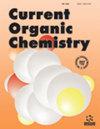熊果酸多方面抗癌作用的分子靶点、作用机制和临床意义的新视角
IF 2.1
3区 化学
Q3 CHEMISTRY, ORGANIC
引用次数: 0
摘要
:熊果酸是从药草、水果和蔬菜中提取的一种五环三萜类化合物,具有药理活性。本综述全面概述了熊果酸与分子靶点的相互作用、各种作用机制及其在癌症治疗中的临床意义。人们对 UA 的药理作用进行了大量研究,其生物益处,如抗炎、抗氧化和抗癌活性已得到证实。研究表明,PI3K/Akt、MAPK 和 NF-κB 等信号通路如何共同控制细胞死亡、增殖和炎症。UA 通过与细胞信号通路中的分子靶点相互作用来有效治疗癌症,使其成为一种有效的治疗选择。乌拉坦能抑制肿瘤细胞转化,限制其繁殖能力,并引发细胞凋亡。研究发现,尿素氮可抑制各种促炎转录因子和细胞周期蛋白,如激酶、细胞因子、趋化因子、粘附分子和炎症酶。这些靶点可通过防止癌症的发生、生长和转移,帮助 UA 发挥化学预防和治疗作用。尿素氮可通过抑制细胞周期并引发细胞凋亡来抑制癌细胞增殖。尿素氮是一种很有前景的抗癌剂,具有多种作用机制。UA 可以靶向多种信号通路并影响肿瘤微环境,这表明它有可能成为癌症治疗的一种辅助疗法。要全面了解 UA 的治疗潜力并优化其在癌症中的应用,还需要进一步的临床研究。本综述探讨了 UA 的分子靶点,并就其潜在的抗癌活性提供了见解。本文章由计算机程序翻译,如有差异,请以英文原文为准。
A New Perspective on the Molecular Targets, Mechanisms of Action, and Clinical Significance of Ursolic Acid’s Multifaceted Anti-Cancer Effects
: A pentacyclic triterpenoid produced from medicinal herbs, fruits, and vegetables, Ursolic acid [UA] has pharmacological activity. This review provides a comprehensive overview of the interactions of UA with molecular targets, its various mechanisms of action, and its clinical implications in cancer therapy. Numerous studies have been conducted on the pharmacological effects of UA, and its biological benefits, such as its antiinflammatory, antioxidant, and anti-cancer activities, have been demonstrated. The study showed how signaling pathways, such as PI3K/Akt, MAPK, and NF-κB, work together to control cell death, proliferation, and inflammation. UA effectively treats cancer by interacting with molecular targets in cell signaling pathways, making it a potent treatment option. UA inhibits tumor cell transformation, limits their reproduction ability, and triggers apoptosis. UA has been found to inhibit various pro-inflammatory transcription factors and cell cycle proteins, such as kinases, cytokines, chemokines, adhesion molecules, and inflammatory enzymes. The targets may aid in UA's chemopreventive and therapeutic benefits by preventing cancer initiation, growth, and metastasis. UA inhibits cancer cell proliferation by arresting and triggering apoptosis through the cell cycle. UA is a promising anti-cancer agent with various mechanisms of action. UA can target multiple signaling pathways and influence the tumor microenvironment, suggesting its potential as a complementary therapy in cancer treatment. Further clinical investigations are needed to entirely understand the therapeutic potential of UA and optimize its application in cancer. This review explores the molecular targets of UA and provides insights into its potential anticancer activities.
求助全文
通过发布文献求助,成功后即可免费获取论文全文。
去求助
来源期刊

Current Organic Chemistry
化学-有机化学
CiteScore
3.70
自引率
7.70%
发文量
76
审稿时长
1 months
期刊介绍:
Current Organic Chemistry aims to provide in-depth/mini reviews on the current progress in various fields related to organic chemistry including bioorganic chemistry, organo-metallic chemistry, asymmetric synthesis, heterocyclic chemistry, natural product chemistry, catalytic and green chemistry, suitable aspects of medicinal chemistry and polymer chemistry, as well as analytical methods in organic chemistry. The frontier reviews provide the current state of knowledge in these fields and are written by chosen experts who are internationally known for their eminent research contributions. The Journal also accepts high quality research papers focusing on hot topics, highlights and letters besides thematic issues in these fields. Current Organic Chemistry should prove to be of great interest to organic chemists in academia and industry, who wish to keep abreast with recent developments in key fields of organic chemistry.
 求助内容:
求助内容: 应助结果提醒方式:
应助结果提醒方式:


